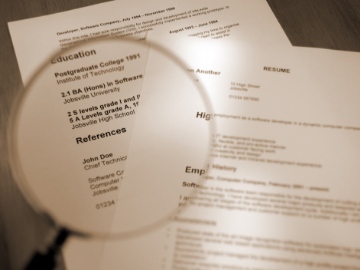How to Write a Job Description for a Resume

As a job seeker, you must advertise your professional background or “professional branding” to potential employers. One of the most important documents to highlight this is your resume. A great resume must mirror your most valuable and relevant skills. It must show what you did in the past, including formal job descriptions for each position.
Job descriptions aren't just mere bullet points employers put on job postings. These help you identify what technical and soft skills, credentials, and work experience you have that will matter most to an employer in your ideal job. Your previous job descriptions will prove that you passed these requirements and are proof of your competence.
Why is it important to have a job description when you already have a good hold on your credentials?
Why You Need a Job Description
The past gets blurry, and memories usually fade. Sometimes, job seekers leave out essential details about their job history. When applying for jobs, you must keep your best foot forward by not leaving out important information about your previous experiences. When establishing your own "brand", you must know who you are and what you can do. You must be the master of your own story.
Employers can sense when you don't understand your past deeply. In some cases, others tend to decide your story for you based on the details you put (and don't put) on your resume. You must own your narrative and tell them what you are. Knowing how to write a job description for a resume will show hiring managers that you have been screened and were deemed competent enough to take desired positions.
How to Write a Job Description for a Resume: 5 Steps
Now that the importance of job descriptions is clear, it's time to know how to write a job description for a resume.
-
Take a trip down memory lane
It may take an hour or several hours to ruminate on the past. Think about the first job you've ever had: what were the responsibilities and requirements involved? What day-to-day tasks did you perform, and how do they relate to your present career?
-
Gather one or two job descriptions for each of your jobs
If possible, you may gather previous job ads and list them accordingly. It's understandable if you don't find the ads from years ago. However, the internet is your friend, and the chances of finding previous job descriptions are thick with just a Google search away.
-
Keep your formal job description
If you can, keep your job description from now on. Chances are, you'll need these details in the future. You'll be thanking yourself for keeping notes.
-
Know that this will take a while
Once you think you've had your past job descriptions all figured out, sleep on it. When you wake up, you may realize that there might have been gaps in your memory, and you have more details to fill in. Just trust the process and be patient.
-
Write the job description
You probably know that writing a job description is a daunting task by now. Looking back isn't easy, especially if your past experience is from ages ago. However, you'll thank yourself for starting sooner than later. In writing your job description, ensure you accurately touch on the critical elements.
Elements of a job description:- Job title
- Job purpose
- Job duties
- Day-to-day tasks
- Connection of the job to the overall business
- Hard and soft skills
- Required education
- Working conditions
- Salary history
- Perks and benefits
Be an Expert of Your Past
To know yourself better professionally, you must take a deep dive into your history. The job market is getting increasingly competitive, and you must be prepared with accurate information once opportunities present themselves. Take your time off to remember previous job descriptions and make it a practice to keep notes moving forward.
Are you ready for what's next in your career? Explore opportunities at Career.com.


